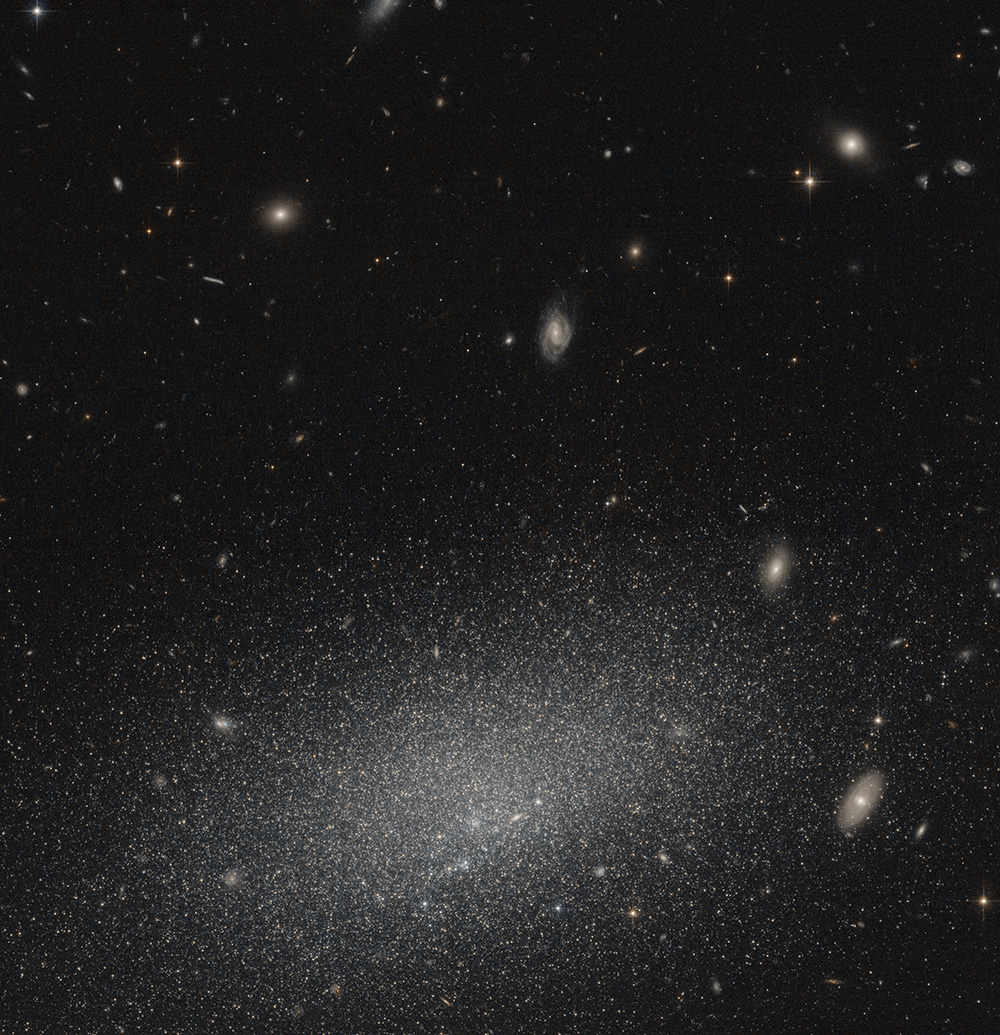
UGC 4879 (2015)
In the bottom half of the frame here is isolated dwarf galaxy UGC 4879, imaged in wideband red (606 nm) and near-infrared (814 nm) light. Each channel was exposed for nearly 19 minutes each which results in a nice, deep picture of both the relatively nearby dwarf and a good number of pleasant background galaxies.
Along with a fairly raw and conservatively processed image of the galaxy which appears nearly grayscale I have included a color-saturated version so that it is more easy to see the younger, brighter, bluer stars at the center of the galaxy and the older, redder ones spread around the outside.
I was scanning through the papers related to the Hubble proposal for which this galaxy was imaged and was pleased to see that it has a few papers devoted to just it. Oftentimes when things are part of a survey they don’t get special attention unless they stand out. What makes this dwarf special is its isolation from other galaxies. If I understand correctly, the idea here is that if it’s far away from everything then astronomers can look at the life cycles of stars without some other galaxy coming along to confuse things by adding on some extra history to account for. Some very old stars have been found in the outskirts of the galaxy. If that interests you, then check out the ADS links at the proposal page: Resolving the Smallest Galaxies with ACS (HST Proposal 11584)
Red: ACS / WFC F814W (jb3c10020_drz.fits)
Green: Pseudo
Blue: ACS / WFC F606W (jb3c10010_drz.fits)
North is NOT up. It is 22.11° counter-clockwise from up.
Copyright information:
Hubble data is public domain, but I put a lot of work into combining it into beautiful color images. The minimal credit line should read: NASA / ESA / J. Schmidt

This work is licensed under a Creative Commons Attribution 3.0 Unported License.


